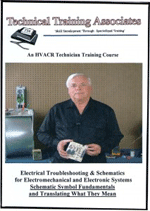Dallas-Fort Worth International (DFW) Airport installed ultraviolet-C (UV-C) equipment from UV Resources as part of its multilayered infection control strategy designed to reduce passenger exposure to any infectious pathogens, including the coronavirus. UV-C has documented efficacy at reducing bacteria, mold exposures, and viruses.
The $7.5 million air disinfection initiative will improve the air quality in all five of DFW's terminals and its rental car center. In November 2020, ultraviolet germicidal irradiation (UVGI) or UV-C disinfection fixtures were installed in 28 air-handling units (AHUs) that serve the building's Transportation Security Administration (TSA) security checkpoints and ticket counters. Since then, 229 additional UV-C fixtures have been installed in the airport's HVAC systems that serve passenger terminals, gate areas, and food courts.
This is the latest in enhanced efforts by the airport in response to the COVID-19 pandemic. The ultraviolet light technology aligns with innovative projects, like the touchless fixtures in smart restrooms and targeted sanitization by cleaning strike teams, throughout all five terminals.
"The use of UV-C light technology, combined with other health and safety protocols the airport has implemented, significantly reduces the exposure risk to passengers and employees in the terminals and prevents the spread of the COVID-19 virus," said Sean Donohue, CEO, DFW Airport.

Proven to Disinfect Air
Since the 1930s, scientists have known germicidal energy in the Sun's C-band wavelength quickly and completely deactivates bacteria and germs in the air and on surfaces.
This near-century-long track record of infection-control efficacy figured prominently into the airport's selection of UV-C technology, according to Rusty Vaughn, vice president of business development and special projects at Texas AirSystems, which provided the UV Resources germicidal equipment.
"The peer-reviewed science coupled with the fact that UV disinfection is endorsed by the U.S. Centers for Disease Control and Prevention (CDC) and ASHRAE helped substantiate the plan," he said.
Germicidal UV-C air disinfection systems are installed in AHUs to disinfect moving airstreams before the treated air reaches occupants. Through a process known as photodimerization, ultraviolet energy damages a cell's nucleic acids and disrupts its genetic code, preventing microorganisms from infecting and reproducing.

Vaughn recommended the RLM Xtreme™ fixtureless UV-C lamp system from UV Resources for its high-output performance and installation versatility.
Designed for high-volume HVAC environments, RLM Xtreme can be installed in almost any position to generate 360-degree high-output UV-C irradiation to inactivate bacteria, viruses, molds, and other pathogens, including antibiotic-resistant superbugs. The uniform 360-degree distribution provides the best air treatment effectiveness and is consistent with ASHRAE Handbook guidance.
"Depending on the available space in each of the 250-plus AHUs, we installed a bank of UV-C fixtures to disinfect airstreams and keep the coil, drain pan, and plenum free of infection-causing and efficiency-robbing microorganisms," said Vaughn. “This is in addition to the MERV-13 filters already installed, which also remove airborne particles.”

Because the UV-C disinfection fixtures are installed inside the airport's AHUs, virtually all occupied spaces will receive air treated by the UV-C systems. As air is recirculated, concentrations of infectious pathogens can be further reduced by each subsequent pass or cycle through the HVAC system, known as multiple dosing.
And, unlike some other technologies, UV-C's electromagnetic energy does not add chemicals, VOCs, or dangerous byproducts to the environment in order to perform deactivation of target pathogens.
After observing the potential benefits of the newly installed germicidal disinfection system, facilities staff agrees this technology has become an important component of the ever-increasing infection-mitigation controls for the fourth busiest airport in the world.
[1] Wells WF, MW Wells, TS Wilder. Viability of B.coli exposed to ultra-violet radiation in the air, Science 1935. 82:280-281.
Retrieved from https://doi.org/10.1126/science.82.2125.280-a








